damn, that broken crown valued at £100m pic.twitter.com/ITxdZgFpJX
— Trung Phan (@TrungTPhan) October 19, 2025
STREET VALUE ‘INESTIMABLE’
https://abcnews.go.com/louvre-museum-closes-after-robbery
Louvre heist: Jewels with ‘inestimable’ value stolen from Napoleon collection
by Kevin Shalvey, Somayeh Malekian, Hugo Leenhardt, Camilla Alcini, Bill Hutchinson, Dragana Jovanovic, and Victoria Beaule from ABC News / October 19, 2025
“Several people disguised as construction workers broke into the world-famous Louvre Museum in Paris on Sunday, cracking open display cases and stealing jewelry that once belonged to Emperor Napoleon and his wife, officials said. At least nine pieces of jewelry of “inestimable heritage and historical value” — including crowns, necklaces, earrings and brooches — were taken in the brazen heist before the thieves made their getaway on motorcycles, two ministers said. “Investigations have begun, and a precise list of the stolen items is underway,” the museum said in a statement
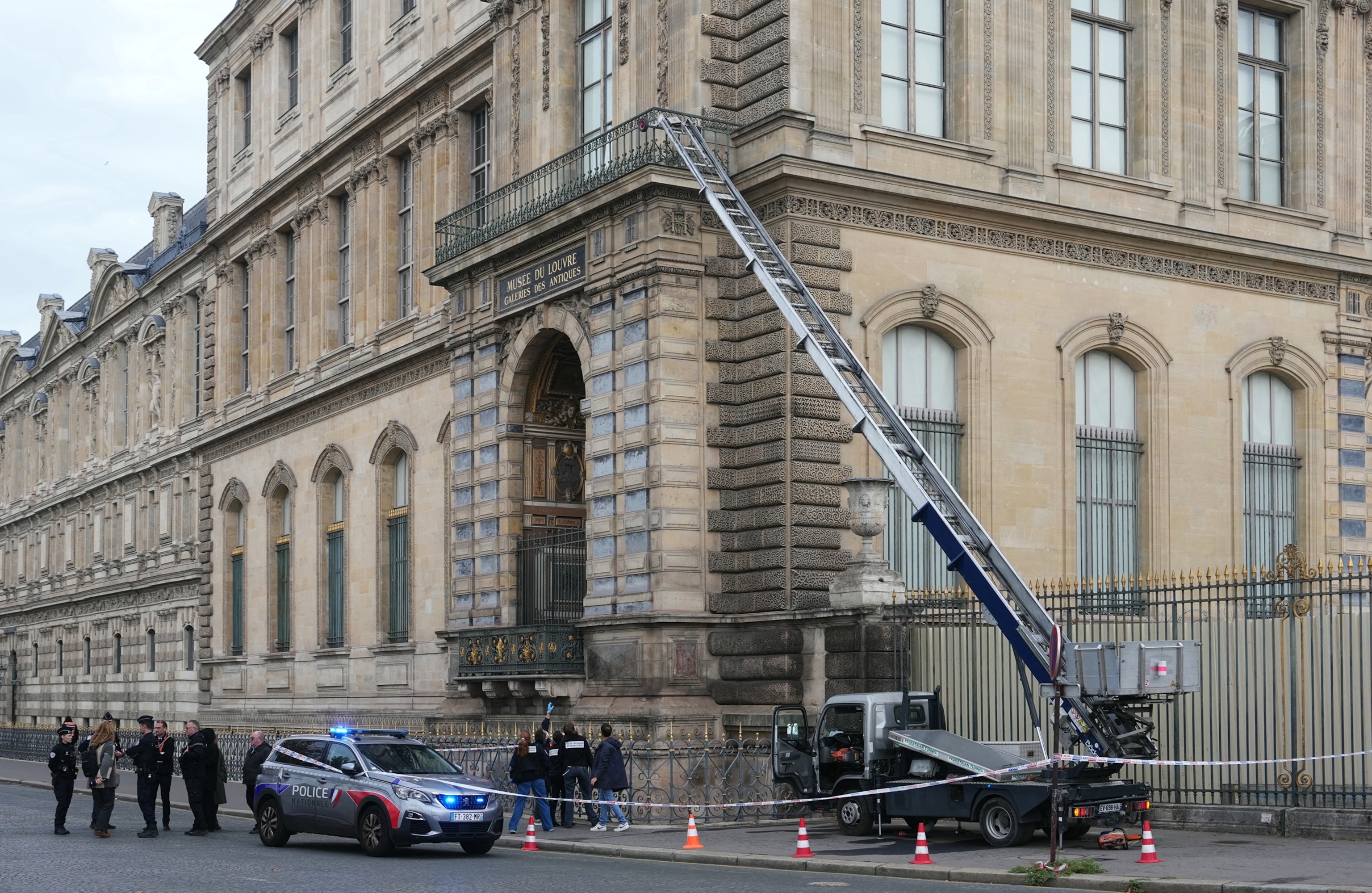
“French police officers investigate an alleged robbery at the Louvre Museum, on Quai Francois Mitterrand, in Paris on Oct. 19, 2025. Dimitar Dilkoff/AFP via Getty Images”
The French Ministry of Culture later on Sunday released a list of eight items that they said had been stolen, which included two brooches, two diadems, two necklaces and two pairs of earrings. French President Emmanuel Macron vowed in a social media post that the stolen jewelry will be recovered.
“The pair of emerald earrings from Marie-Louise’s collection.
Musée du Louvre / Jean-Gilles Berizzi
“The theft committed at the Louvre is an attack on a heritage that we cherish because it is our history,” Macron said. “We will recover the works, and the perpetrators will be brought to justice. Everything is being done, everywhere, to achieve this, under the leadership of the Paris prosecutor’s office.” Four thieves pulled off the apparently well-planned heist, according to authorities. The theft took place around 9:30 a.m. local time on Sunday, just before the museum was set to open to the public, the Paris Police Prefecture said in a statement.
There was just one surveillance camera in the area where thieves parked a truck-mounted lift to rob the Louvre Museum—and it was pointed in the wrong direction https://t.co/qJ94kEKBH3
— The Wall Street Journal (@WSJ) October 22, 2025
The team of thieves drove up to the side of the museum in what police described as a “mobile freight elevator” equipped with a metal ladder on the back that was extended up to a window, according to the Paris police.”Th ey deployed the freight elevator, securing the surroundings with construction cones, before accessing the second floor, in the Apollo gallery, by breaking the window with an angle grinder,” according to the police statement. “Inside, they then smashed two display cases, ‘Napoleon jewels’ and ‘French crown jewels,’ using the angle grinder and stole numerous pieces of high-value jewelry.”
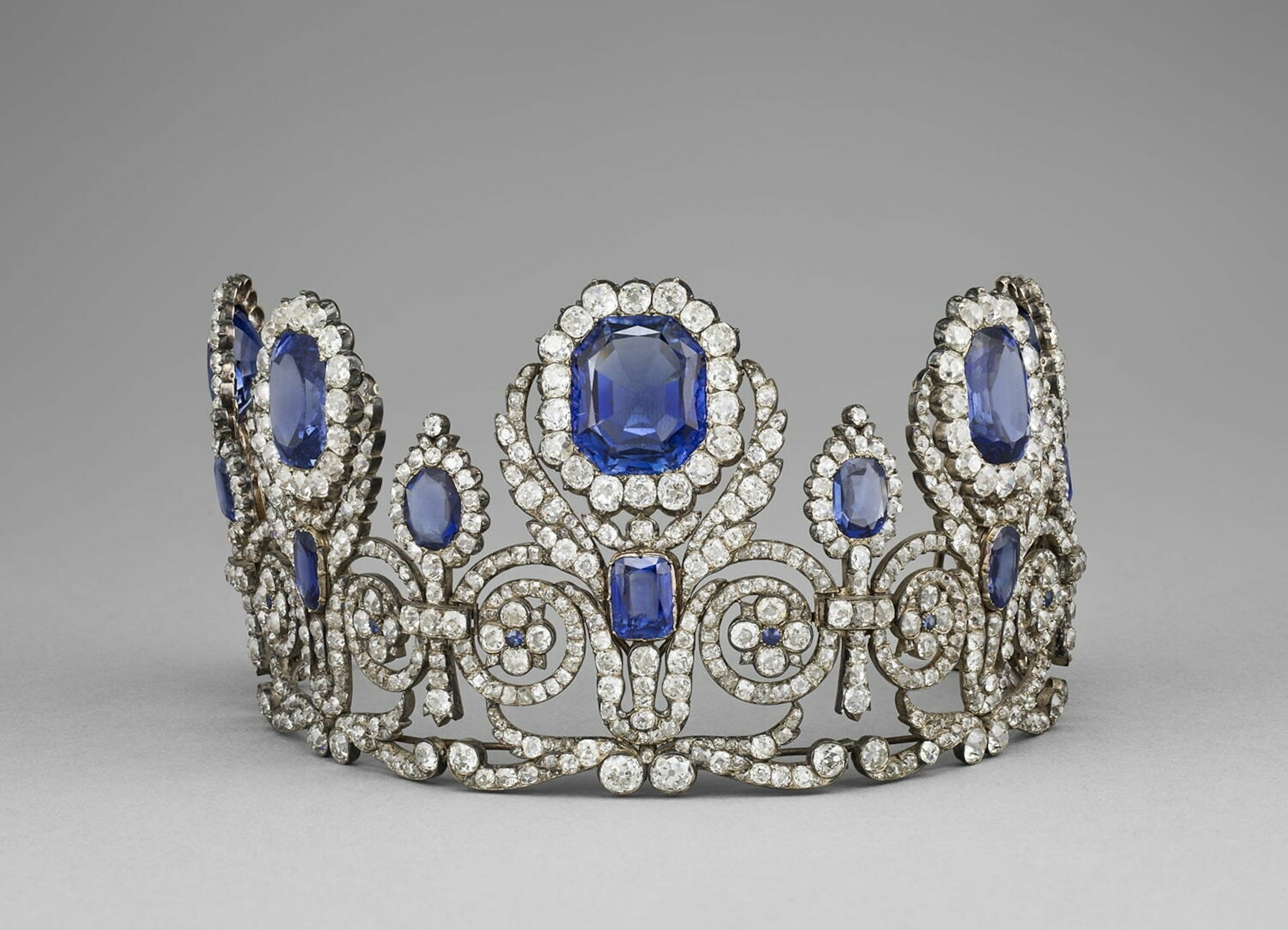
“Among the jewelry stolen from the Louvre museum, Oct. 19, 2025, is this diadem, or crown, from the collection of Queen Marie-Amélie and Queen Hortense.”
Two of the thieves arrived at the museum in the mobile freight elevator, one wearing a yellow vest and the other an orange vest, according to police. Two accomplices arrived at the museum at the same time on what police described as “T-max vehicles” or sports motorbikes. “The staff on site, upon seeing what was happening, took to safety,” according to the police statement. “An alarm was triggered at 9:37 a.m. The perpetrators exited through the window by going back down the freight elevator before fleeing on the two motorbikes at 9:38 a.m.”
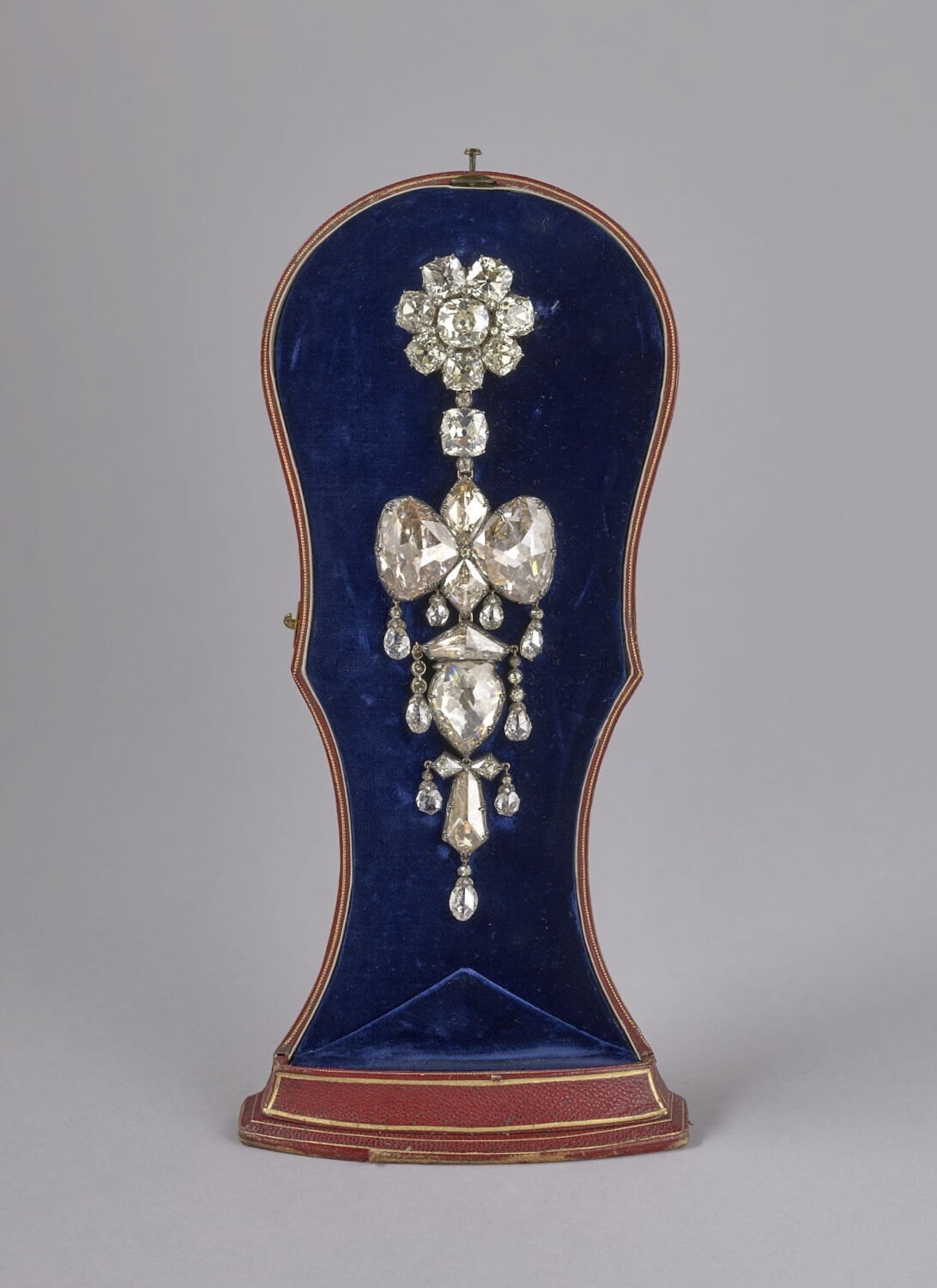
“The brooch known as the reliquary brooch
Musée du Louvre / Stéphane Maréchalle”
The Paris Prosecutor’s Office said the perpetrators tried and failed to set fire to the mobile freight elevator they used in the heist before they fled the scene. Police say they’re investigating a video obtained by BFMTV, a French news broadcast television and radio network, which they believe shows one of the suspects appearing to try to access one of the jewelry cases.
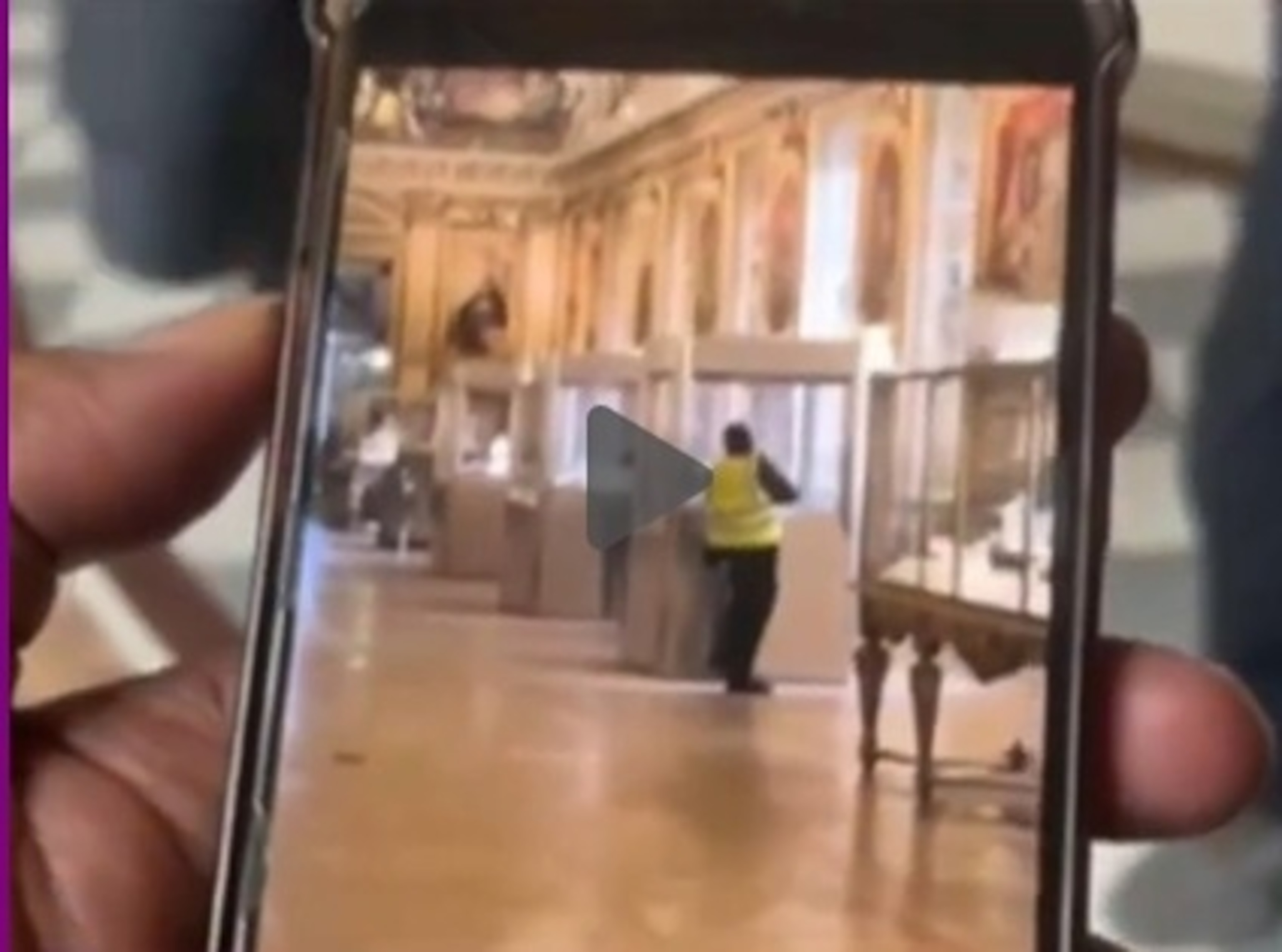
“Police say they’re investigating a video obtained by BFMTV, a French news broadcast television and radio network, which they believe shows one of the suspects appearing to try to access one of the jewelry cases. BFMTV”
Following the heist, police found two angle grinders, a blowtorch, gasoline, gloves, a walkie-talkie, a blanket, and a crown at the scene. Police also found a yellow vest that was apparently dropped by one of the fleeing perpetrators at the corner of Pont de Sully and Avenue Henri IV, several blocks from the Louvre, police said. French Interior Minister Laurent Nunez, in an interview on local radio, said the value of the items would be “inestimable.”
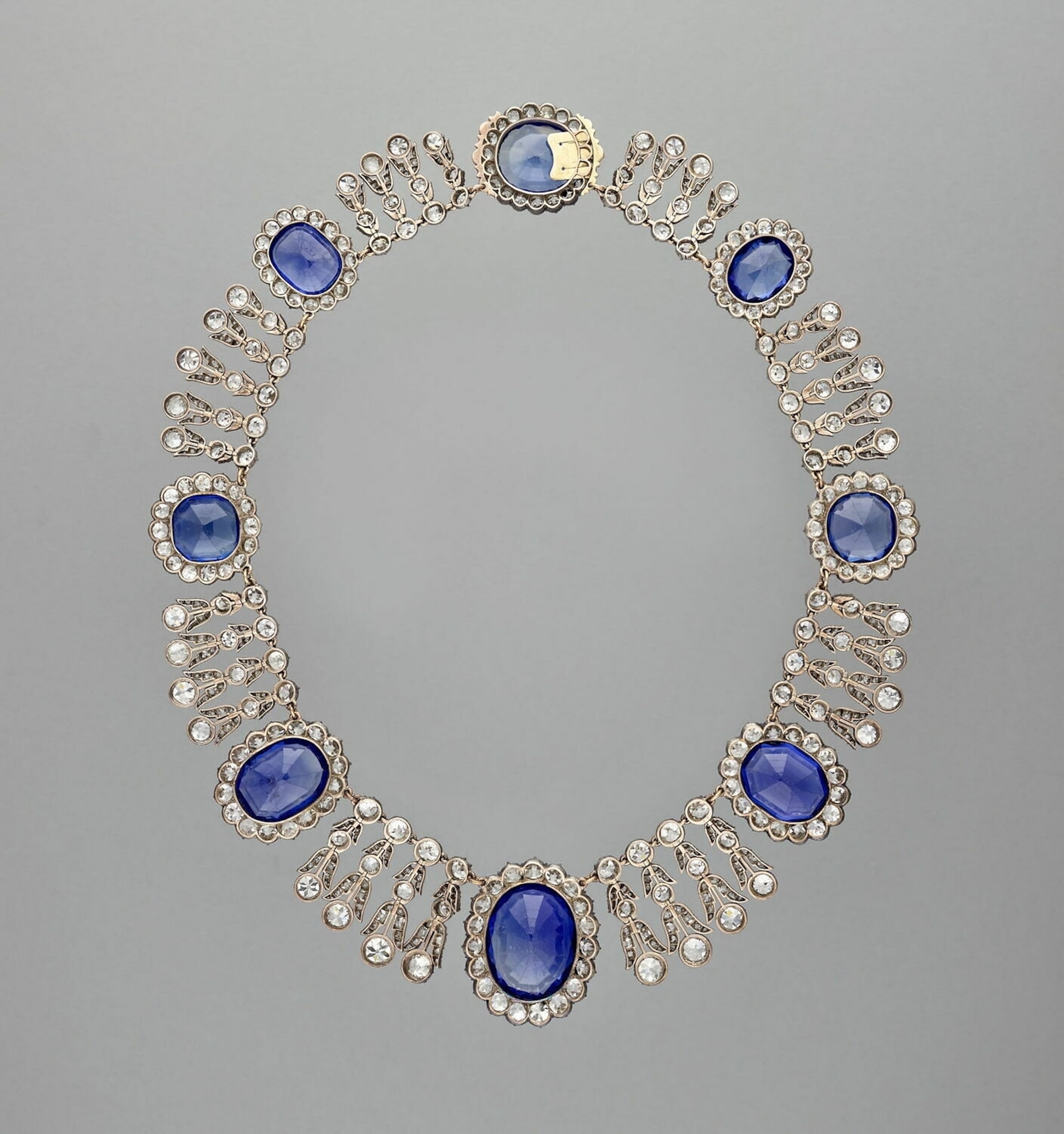
“Among the jewelry stolen from the Louvre museum, Oct. 19, 2025, is this necklace from the sapphire collection of Queen Marie-Amélie and Queen Hortense.(Stéphane Maréchalle)
According to the French Ministry of Culture, among the items stolen was a diadem, or crown, from the collection of Queen Marie-Amelie and Queen Hortense; an emerald necklace and a pair of emerald earrings from the collection of Marie-Louise, Napoleon’s second wife; and a large bow brooch from Empress Eugenie’s bodice.
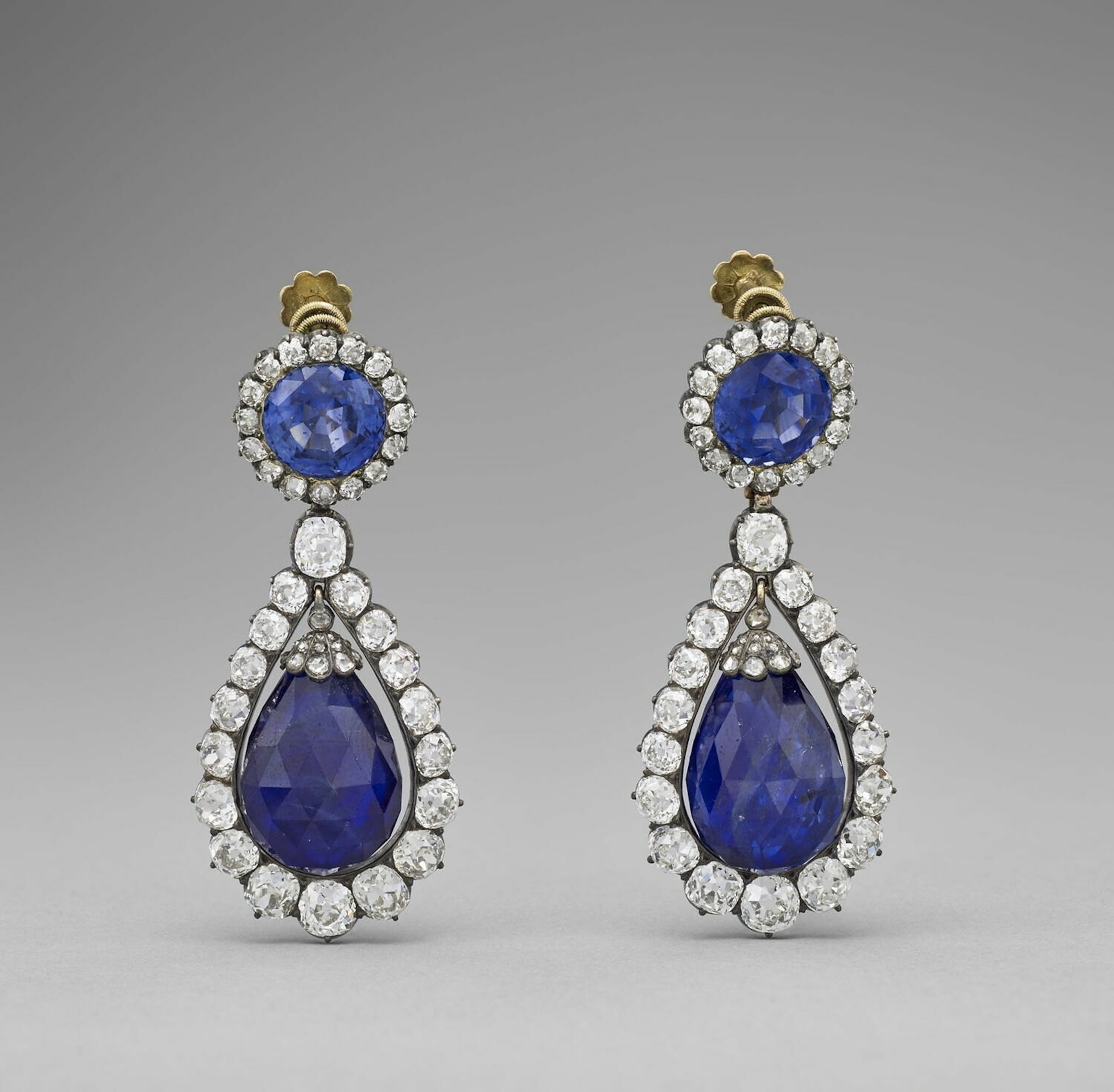
“Among the jewelry stolen from the Louvre museum in Paris, October 19, 2025, is this pair from the sapphire collection of Queen Marie-Amélie and Queen Hortense”
The thieves either dropped or abandoned two pieces of jewelry as they exited the museum, including one of Empress Eugénie’s crowns, according to the Paris Prosecutor’s Office, which said it is investigating the case as an aggravated theft by an organized gang and criminal conspiracy to commit a crime. The alleged robbery took less than seven minutes, he said. A notification posted on the Louvre’s website shortly afterward said, “The Louvre Museum will remain closed today for exceptional reasons. We thank you for your understanding.”
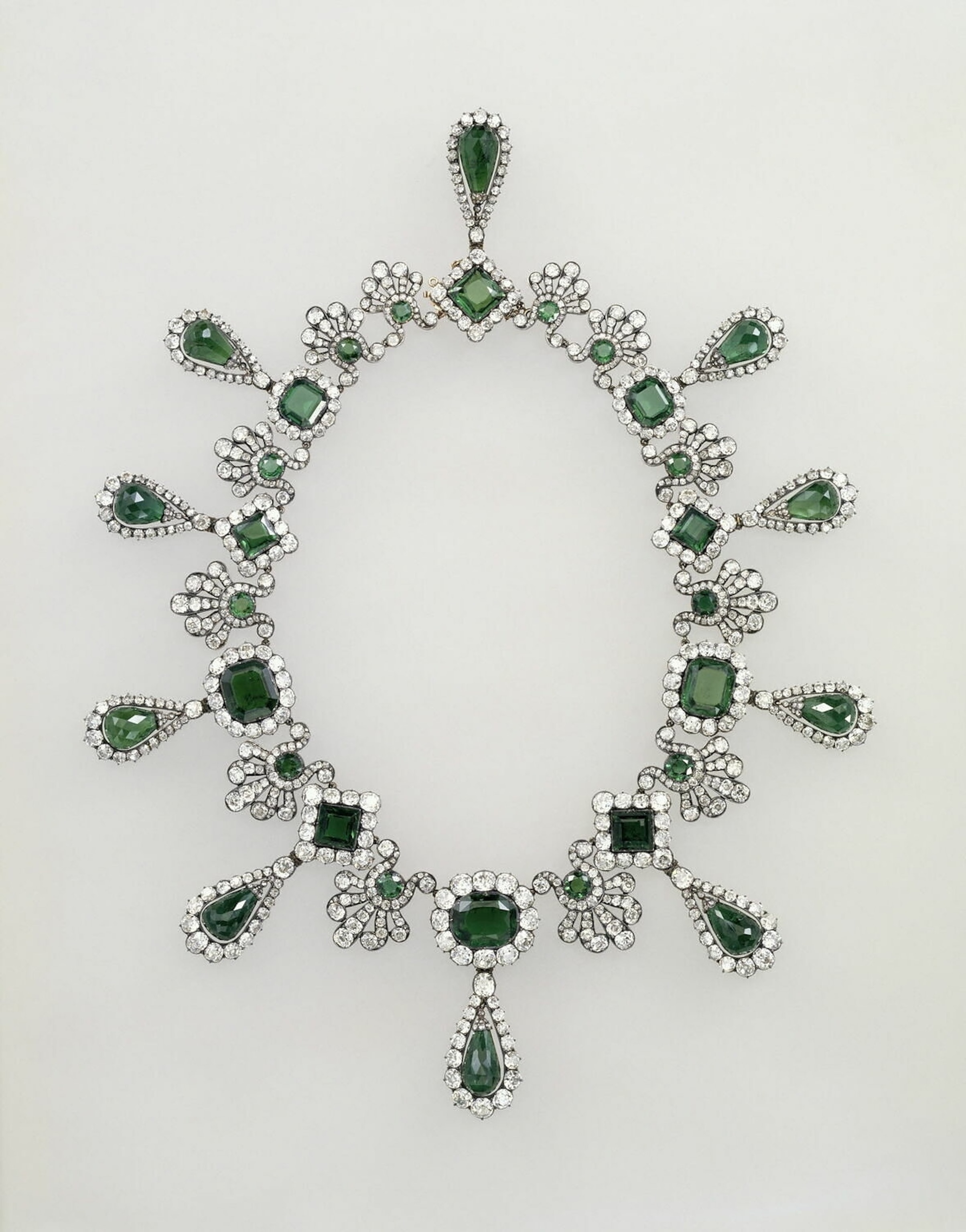
“Among the items stolen from the Louvre museum, October 19, 2025, is this emerald necklace from Marie-Louise’s collection.” (Stéphane Maréchalle)
The decision to close the museum was made jointly by its management, the police and the Ministry of the Interior, museum officials said in a statement. The doors were closed as “a security measure and to preserve traces and evidence for the investigation,” the statement said. Kaci Benedetti, who was visiting Paris from the United States, told ABC News she was standing in line to enter the museum on Sunday when a commotion began. Police were running along the courtyard where Benedetti and her family were waiting, she said. She watched as the officers attempted to enter the building through a side door, but “could not because they were locked,” she said.
🇫🇷 FLASH | De nouvelles images révèlent le sang-froid et la facilité avec lesquels les malfaiteurs du Louvre ont opéré leur vol en plein jour.pic.twitter.com/jS2gXtHmL4
— AlertesInfos (@AlertesInfos) October 22, 2025
“We could see people inside running and some were banging on the glass doors to get out, but could not because they were locked,” Benedetti said. “Then police and military police arrived. After about an hour they announced the Louvre was closed for today.” The news of the robbery came first from French Minister of Culture Rachida Dati, who said on social media, “A robbery took place this morning at the opening of the Louvre Museum.” Dati added, “No injuries to report. I am on site alongside the museum teams and the police. Investigations underway.” Christopher Marinello, the CEO and founder of Art Recovery International, told ABC News that security at the Louvre is known as “the best in the world.”
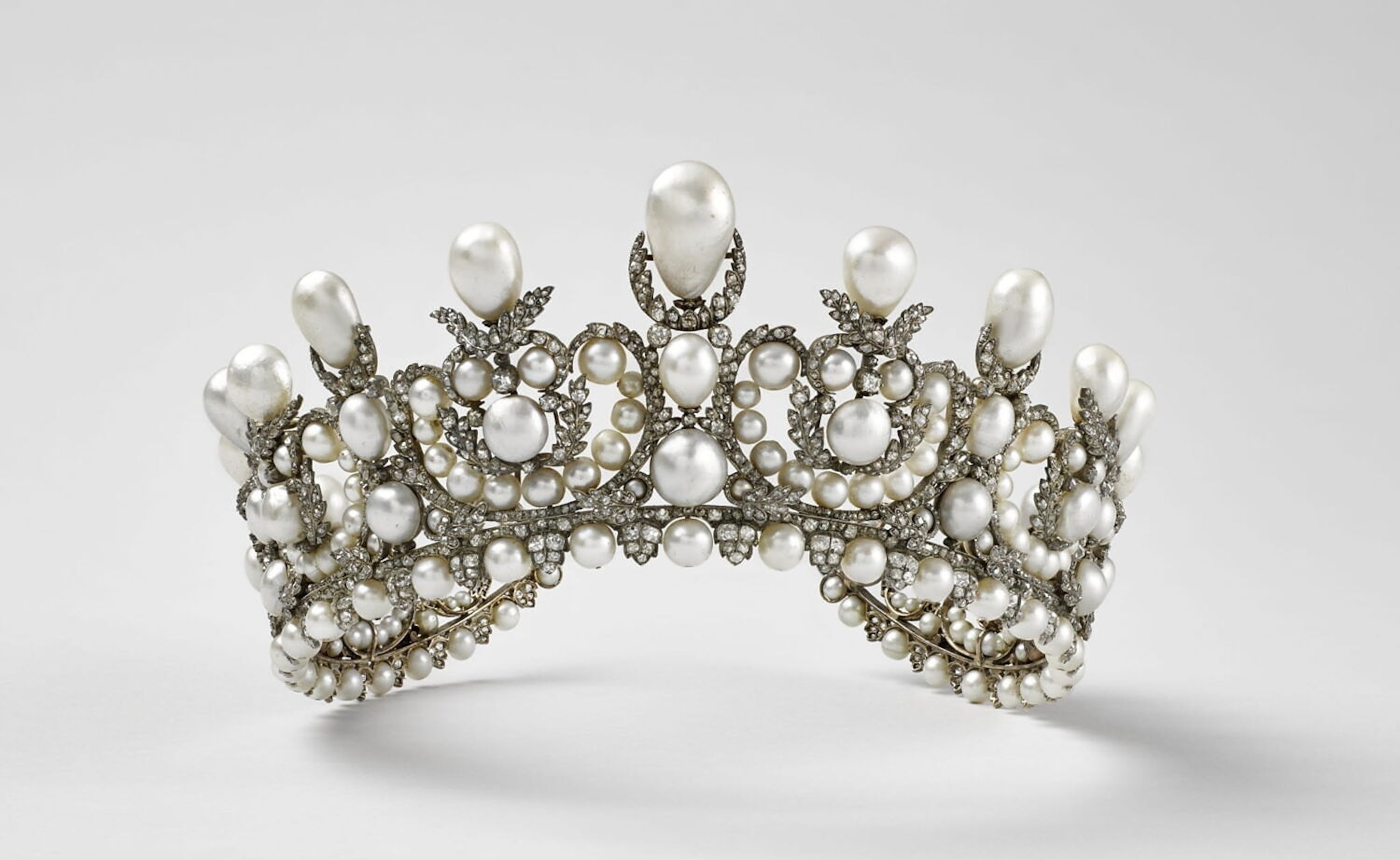
“The diadem of Empress Eugénie.. Musée du Louvre / Stéphane Maréchalle”
“So this is a very audacious crime and a slap in the face to museums everywhere,” Marinellro said, adding that investigators are now “in a race against time” to recover the stolen jewelry before the thieves attempt to sell the items to buyers who likely will not purchase the pieces intact. “The criminals are going to try to hide what they have just done and the way they hide it is by breaking up those jewels, by recutting those stones, by melting down the precious metals,” Marinello said. “They are now doing that. And the police have a very short window to locate these thieves and try to recover these items.” Nathalie Abbou Vidal has spent her life surrounded by jewels that have lived through revolutions, crowned emperors and survived wars. As one of France’s leading jewelry historians, she teaches at the prestigious Haute Ecole de Joaillerie and advises major auction houses and the French courts.
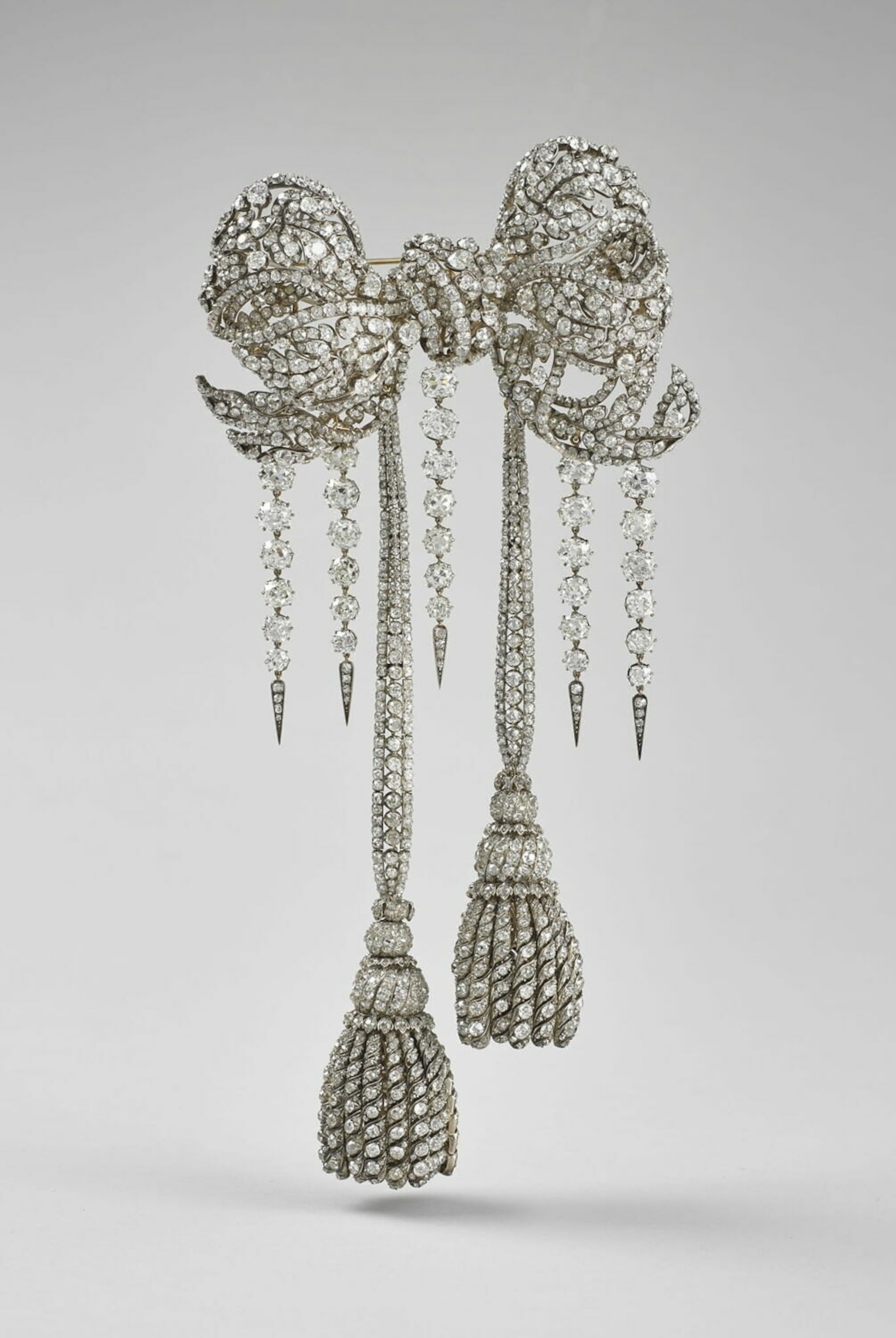
“The large bow from Empress Eugénie’s bodice.
Musée du Louvre / Stéphane Maréchalle”
She told ABC News the idea that these treasures — “too important, too full of history, too much a part of who we are” — could be dismantled for profit is almost unthinkable. “The weight of the gold is nothing. The diamonds — they’re old European stones, centuries old. You can’t just break them apart,” she said. Even the black market, she believes, will struggle to erase the identity of the pieces. “They’re not just objects. They’re part of our heritage.”
BREAKING:
Video from the Louvre heist: a man dressed as a construction worker breaks open a display case in the Apollo Gallery.
Museum visitors walk by, unaware that a robbery is taking place.
— Visegrád 24 (@visegrad24) October 19, 2025
MELT VALUE EASIER to MEASURE
https://independent.co.uk/louvre-heist-france-news-latest-what-was-stolen
Everything that was stolen in the daring Louvre heist
by Maroosha Muzaffar / 20 October 2025
“Thieves armed with power tools carried out a daring daylight raid at the Louvre Museum on Sunday, making off with eight pieces of priceless jewellery from the Galerie d’Apollon, home to the French crown jewels. The heist occurred around 9.30am, shortly after the museum opened, authorities said. Using a basket lift mounted on a truck, the intruders reached a second-floor window and cut through the glass with a disc cutter, before smashing display cases and fleeing on motorbikes, authorities said. Interior minister Laurent Nunez described it as a “major robbery” involving “jewels that have genuine heritage value and are, in fact, priceless”.
BREAKING: Officials confirms jewellery was stolen from the Louvre museum in Paris.
The robbers escaped with nine pieces of jewellery from Napoleon and the Empress’s collection.https://t.co/G8gDzyqv3Q
📺 Sky 501, Virgin 602, Freeview 233 and YouTube pic.twitter.com/NXEXQPGvnt
— Sky News (@SkyNews) October 19, 2025
The authorities have now released the full list of items that were taken during the heist, including a necklace, a brooch and a tiara from Napoleon’s imperial collection. A crown that belonged to Empress Eugenie, Napoleon III’s wife, was dropped by the thieves and later recovered nearby. However, the incident left it damaged. The French culture ministry confirmed the stolen items were:
- A tiara, necklace and a single earring from a set that belonged to Queen Marie-Amelie and Queen Hortense
- An emerald necklace and a pair of emerald earrings from the Empress Marie Louise set
- A brooch known as the “reliquary brooch”
- A tiara belonging to Empress Eugenie
- A large corsage bow brooch of Empress Eugenie.
According to the museum’s website, the tiara from the set belonging to Queen Marie-Amelie and Queen Hortense is “composed of five articulated elements, each topped with a large sapphire. In total [there are] 24 sapphires, 10 of which [are] very small, and 1,083 diamonds”. The Queen Marie-Amelie and Queen Hortense sapphire set belonged to King Louis-Philippe’s wife, while the Empress Marie Louise emerald set was a gift to Napoleon’s second wife. The Empress Eugenie tiara, large corsage brooch, and “reliquary brooch” were part of Napoleon III’s wife’s collection, made in the 1850s. The Eugenie brooch alone contains 2,438 diamonds.
Culture minister Rachida Dati said the robbery lasted less than four minutes. She said the footage of the operation revealed that the thieves “don’t target people, they enter calmly in four minutes, smash display cases, take their loot, and leave”. “No violence, very professional,” she was quoted as saying by TF1. The Louvre, which draws tens of thousands of visitors daily, was closed for the day for “exceptional reasons”. Forensic teams are on site, and police are reviewing CCTV footage to identify the perpetrators. Witnesses reported scenes of chaos as police closed the museum’s gates and nearby roads.
Art detective Arthur Brand described the heist as “the theft of the decade”, warning that the jewels could be melted down or dismantled if not recovered quickly. He told Sky News that the “police will need to find the culprits in just one week… These crown jewels are so famous, you just cannot sell them,” Mr Brand said. “The only thing they can do is melt the silver and gold down, dismantle the diamonds, try to cut them. That’s the way they will probably disappear forever.”
“It had to be an inside job or inside information.”
Former jewel thief Larry Lawton reacts to the Louvre heist and the thieves who made off with France’s crown jewels pic.twitter.com/PLMKopzExk— FOX & Friends (@foxandfriends) October 20, 2025
He continued: “They [the police] have a week. If they catch the thieves, the stuff might still be there. If it takes longer, the loot is probably gone and dismantled. It’s a race against time.” President Emmanuel Macron vowed swift justice and said France would “recover the works”. He added: “The theft committed at the Louvre is an attack on a heritage that we cherish because it is our history.” Experts have described this as the most daring robbery at the Louvre since the 1911 disappearance of the Mona Lisa, which was recovered in Florence two years later.”
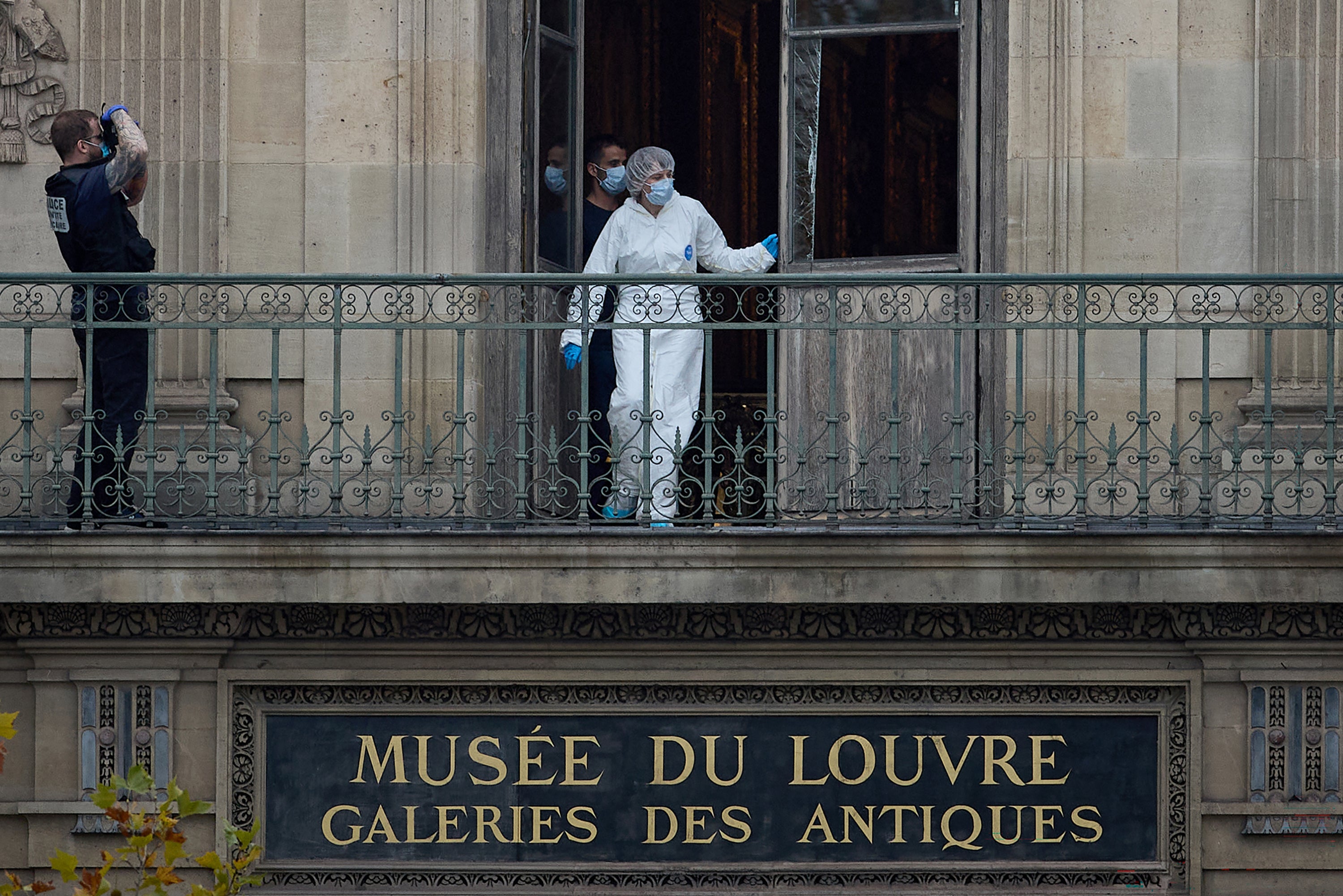
“A forensics officer examines the window used by thieves to access the Louvre Museum”
UNSALEABLE INTACT
https://france24.com/what-will-happen-to-france-s-stolen-crown-jewels
What will happen to France’s stolen crown jewels?
by Diya Gupta / 20/10/2025
“The robbery in broad daylight at the Louvre on Sunday morning is one of the biggest, most brazen museum heists in recent memory. At 9:30am, an alleged “strike team” of four professional burglars drove to the banks of the Seine and set up a cherry-picker beneath the windows of the Musée du Louvre: a feather in France’s cap and one of the most famed and prestigious museums anywhere in the world. The cherry picker carried two thieves disguised as builders to the first floor, where they forced open a window with an angle grinder and entered the gilded Galerie d’Apollon – a masterpiece of Baroque architecture that holds some of France’s most prized jewels, many of which belonged to monarchs and leaders at different times in history.
The theft of Napoleonic treasures in the Louvre followed a change in the display cases in 2019. Before then, the Rococo display cases had armored glass and if disturbed the treasures would drop into a safe. They were later replaced by “modern” displays with normal glass. pic.twitter.com/ZJxvaictsR
— Hernan Cortes (@CyberPunkCortes) October 20, 2025
The robbers went on to smash the display cases that held the jewels and take nine pieces said to be of “inestimable heritage and historical” value. By 9.38am, they had vanished on two powerful scooters, leaving behind a pair of gloves, two angle grinders, a blow torch and a walkie-talkie. The stolen pieces include a pearl and diamond encrusted diadem, a sapphire tiara, necklaces adorned with gemstones and delicate brooches dripping with hundreds of precious diamonds. But in their getaway, the thieves dropped the crown of Empress Eugénie, wife of Napoleon III, who reigned from 1852 to 1870. The dazzling crown, decorated with gold eagles, studded with diamonds and emeralds, was found slightly damaged outside the Louvre shortly after the thieves had fled.
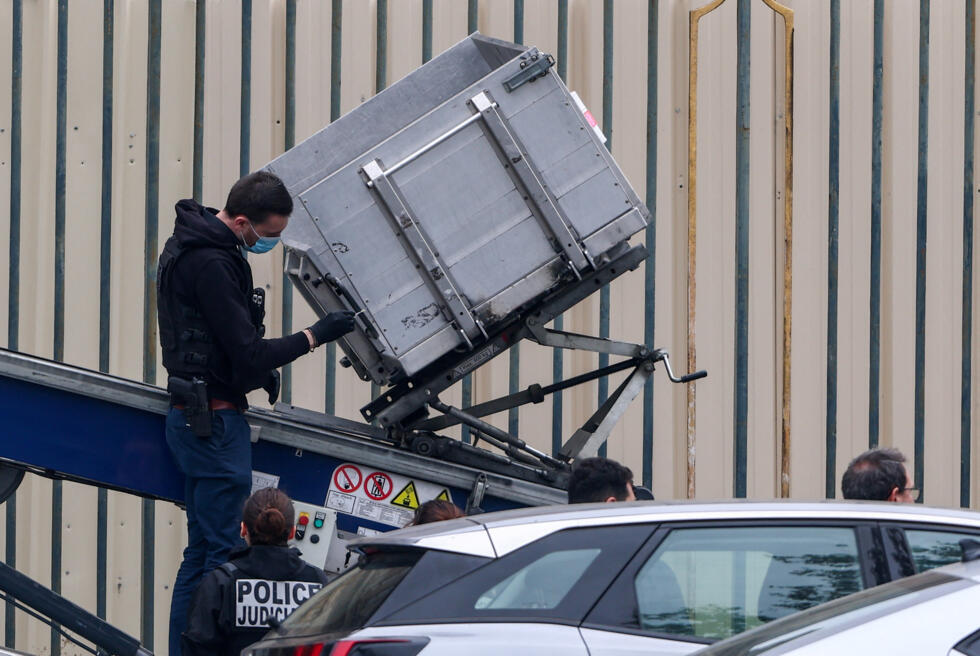
“Police officers work at a crane believed to have been used in a robbery at the Louvre museum in Paris, France, October 19, 2025
The audacious theft took between four and seven minutes: roughly the time the average Parisian would take to brew a morning cup of coffee and have their first sip. It was a scene straight out of a heist movie and prompted a wave of alarm at the museum’s clearly lax security, which France’s new Interior Minister Laurent Nuñez acknowledged was a “major weak spot”. French opposition leaders went so far as to call the theft an “unbearable humiliation” that cast the country in ‘deplorable light’.
The Napoleonic crown jewels stolen from the Louvre made international headlines because of how quickly they were stolen. But did you know that some of them were made of jewels from the Global South stolen by European colonizers? pic.twitter.com/M6FhUJjY16
— AJ+ (@ajplus) October 21, 2025
While that may sound like hyperbole, it’s true that The Louvre is a large source of revenue for the city and one of the country’s biggest attraction for tourists, who flock from around the world to see the famous paintings and objects it houses. The museum remained shuttered on Monday, with no clear date announced yet for its reopening. In total, the Louvre generates annual revenues ranging from €200 million to €250 million in a typical year, combining all income streams. Its collection was last valued at 35 billion – although most art experts would agree that putting a precise value on the culturally and historically objects within its walls is near impossible. The stolen jewels represent millions of euros of that worth.
Christopher Marinello is a lawyer and an expert in recovering stolen, looted, and missing works of art. In 2013, he founded Art Recovery International, which according to its website has recovered lost artwork valued at more than $500 million on behalf of different institutions including museums, governments and cultural institutions. He described the robbery as a “well-planned smash and grab”, adding that no one would touch the stolen jewels as they were.
Unfortunately, Marinello’s prognosis for the jewels was grim. “There is a small chance some buyers in certain countries would buy the jewels as they are, but that’s unlikely,” he said. “It’s not a stolen Picasso, which needs to be kept intact, or its worthless,” he added. Marinello explained that traditional art – paintings, sculptures and the like, have to be preserved in as near perfect quality as possible to retain their value. In those cases, criminals will sell the paintings – likely for a fraction of the price – to underground art dealers, or in some cases, trade the art for weapons or other contraband.
But jewels are different. Given the ease and expertise with which the robbers looted the Louvre, Marinello said, they may already have a system in place to break down the jewels and sell the gold, diamonds and precious stones in pieces to buyers. “It isn’t hard to fly to Israel, Antwerp or India and simply have them recut,” he said. “Once that’s done, they’re instantly unrecognisable. No one would know where they came from, no one would know that they were the crown jewels.”
Marinello cited the story of the gold toilet stolen from Blenheim Palace, another movie-like heist which took place in the UK, where thieves ripped out a 4.8m euro solid gold toilet from a hardwood floor and fled the scene in a stolen Volkswagen Golf. “As they were leaving the museum they were breaking up the solid gold toilet in pieces. Bits were even found in the car later,” he said. Three men were eventually arrested for the robbery, but the gold had long been melted down and sold in pieces.
A similar event took place in 2017, when a 100 kg gold coin known as “Big Maple” was stolen from the Bode museum in Germany by a group of four men, using a skateboard and a wheelbarrow. The men were caught later, but the priceless artefact was long gone. In a few rare cases – like the robbery at the Dresden Green vault – some stolen jewels were eventually recovered. However, it may be more likely that they will suffer the same fate as Big Maple and the Golden Toilet.
Although breaking down France’s crown jewels might be more difficult than melting gold, Marinello believes the jewels might never be seen in the form they were before they were stolen. The jewels – when broken down into pieces – will undeniably lose some of their value but given that many of the pieces have well over 1,000 diamonds each, the thieves would still make a handsome profit. But Marinello has hope that the criminals will be caught. “I’m fairly confident that the French police will catch the thieves,” he said, adding that that they’re likely already known to authorities, given that robbers at this scale work in known and often well-organised gangs.
“People who rob at this level do it like a career. This is their job. They get to keep a big chunk of money, spend a few years in prison exercising and coming right back out and shopping at the next museum,” said Marinello, who argues that the penalties for art theft aren’t nearly strict enough. “The first crime is for theft. The second is for the destruction of art and cultural heritage – not just against one person, but against millions of people and future generations, who have lost the opportunity to study and appreciate the lost items.”
Marinello suggested that penalties and jail time should be increased to deter future heists at this scale, that countries must establish clear lines for regular theft – and theft which holds greater cultural consequence. Paris is also one of the world’s luxury capitals. If it’s just about the value of the raw materials, one might argue that the robbers could have just stolen from a high-end jewellery showroom instead. Marinello laughed off the idea: “I hate to say it, but Cartier is better protected than the Louvre.” “I hope that this is a wakeup call to museums around the world to protect what they have. But it shouldn’t have had to happen … for people to notice.”
PREVIOUSLY
UNTOLD RICHES
https://spectrevision.net/2022/09/15/unspeakable-wealth/
TREASURE HUNTING TEAMS
https://spectrevision.net/2019/01/03/treasure-hunting-teams/
COLONIZERS REMORSE
https://spectrevision.net/2018/07/05/colonizers-remorse/